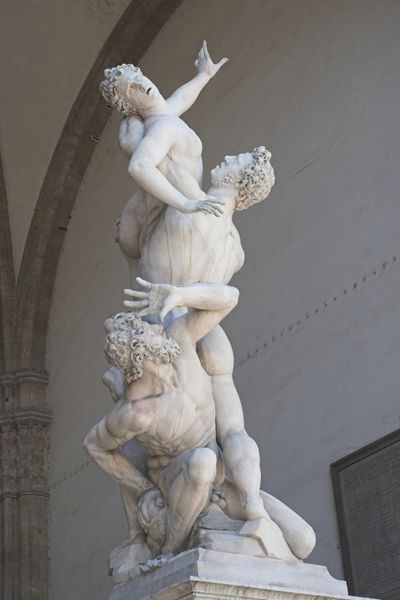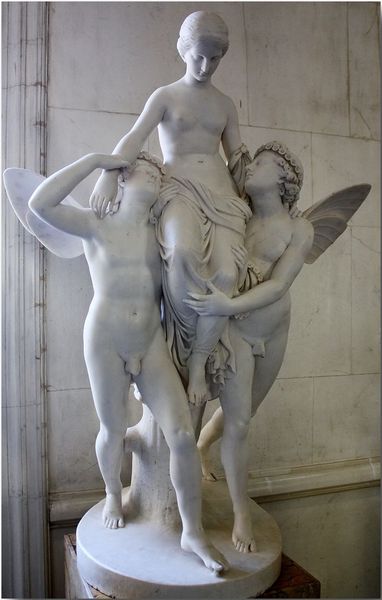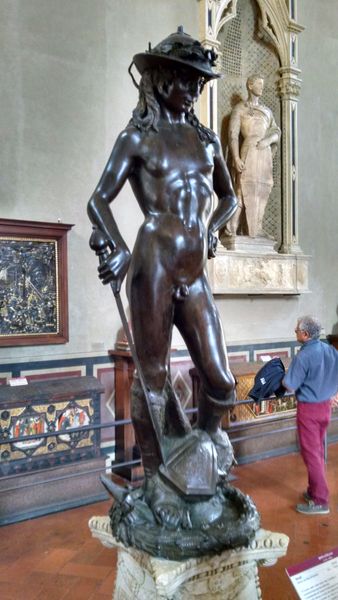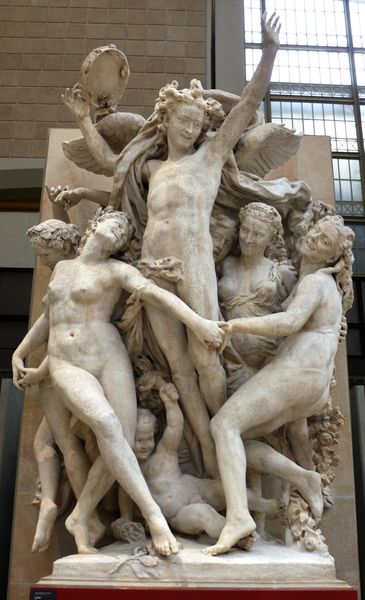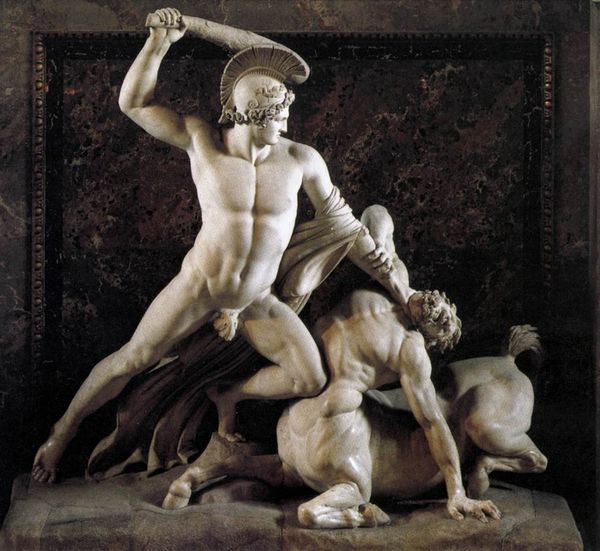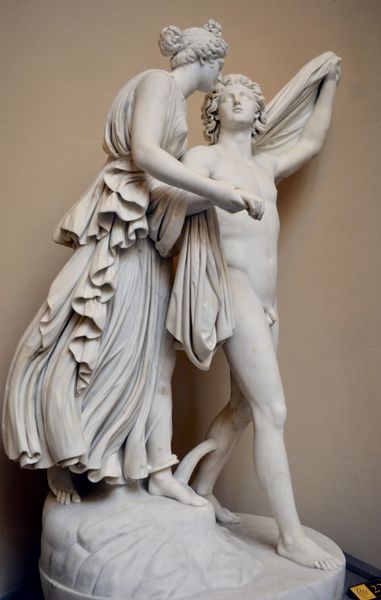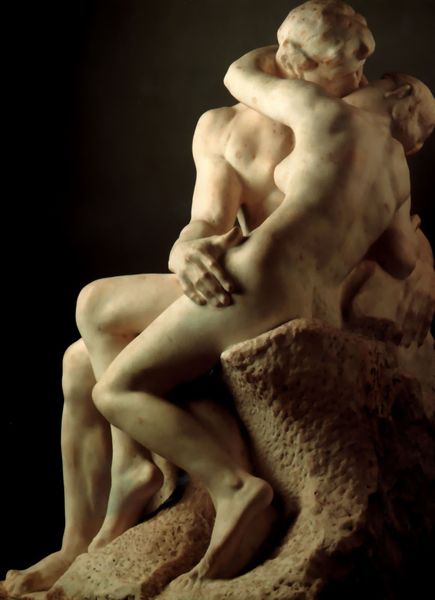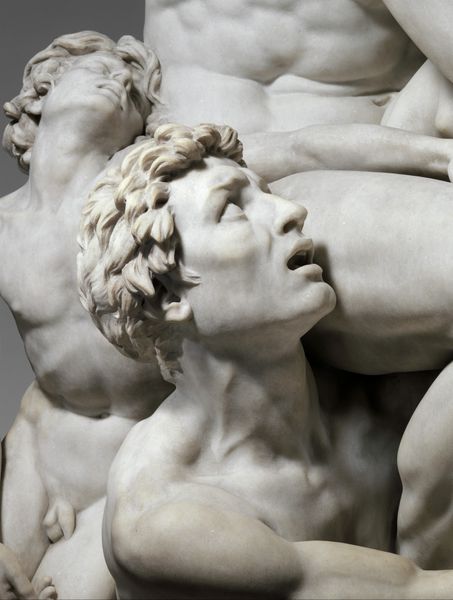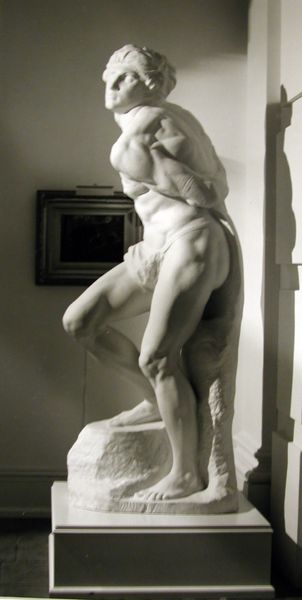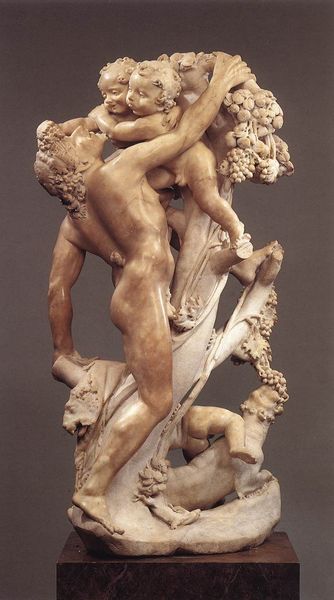
carving, sculpture, marble
#
statue
#
carving
#
sculpture
#
mannerism
#
figuration
#
sculpture
#
group-portraits
#
history-painting
#
marble
#
nude
#
statue
Copyright: Public domain
Giambologna created this sculpture from a single block of white marble in the late 16th century. Marble’s inherent qualities of weight and luminosity lend the sculpture its dramatic presence. The twisting, upward surge of the three figures—a Roman man abducting a Sabine woman above a crouching, despairing male figure—demonstrates the artist’s technical virtuosity. The making of this artwork involved a complex process of carving and polishing, requiring not only physical strength but also a profound understanding of the material. Giambologna was engaging with the classical traditions of sculpture, pushing the boundaries of what was technically feasible with marble. Consider, too, the social context of its making. Stone was quarried and transported, and many hands would have been involved in its creation. By emphasizing material and the process, we can appreciate not only the aesthetic qualities of the sculpture but also the labor, politics, and consumption involved in its production. This gives us a fuller understanding of its meaning, challenging the conventional distinctions between fine art and craft.
Comments
No comments
Be the first to comment and join the conversation on the ultimate creative platform.
